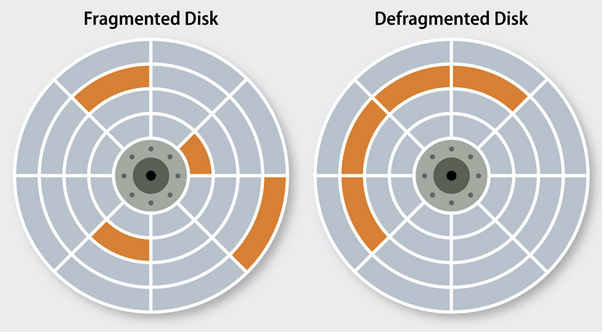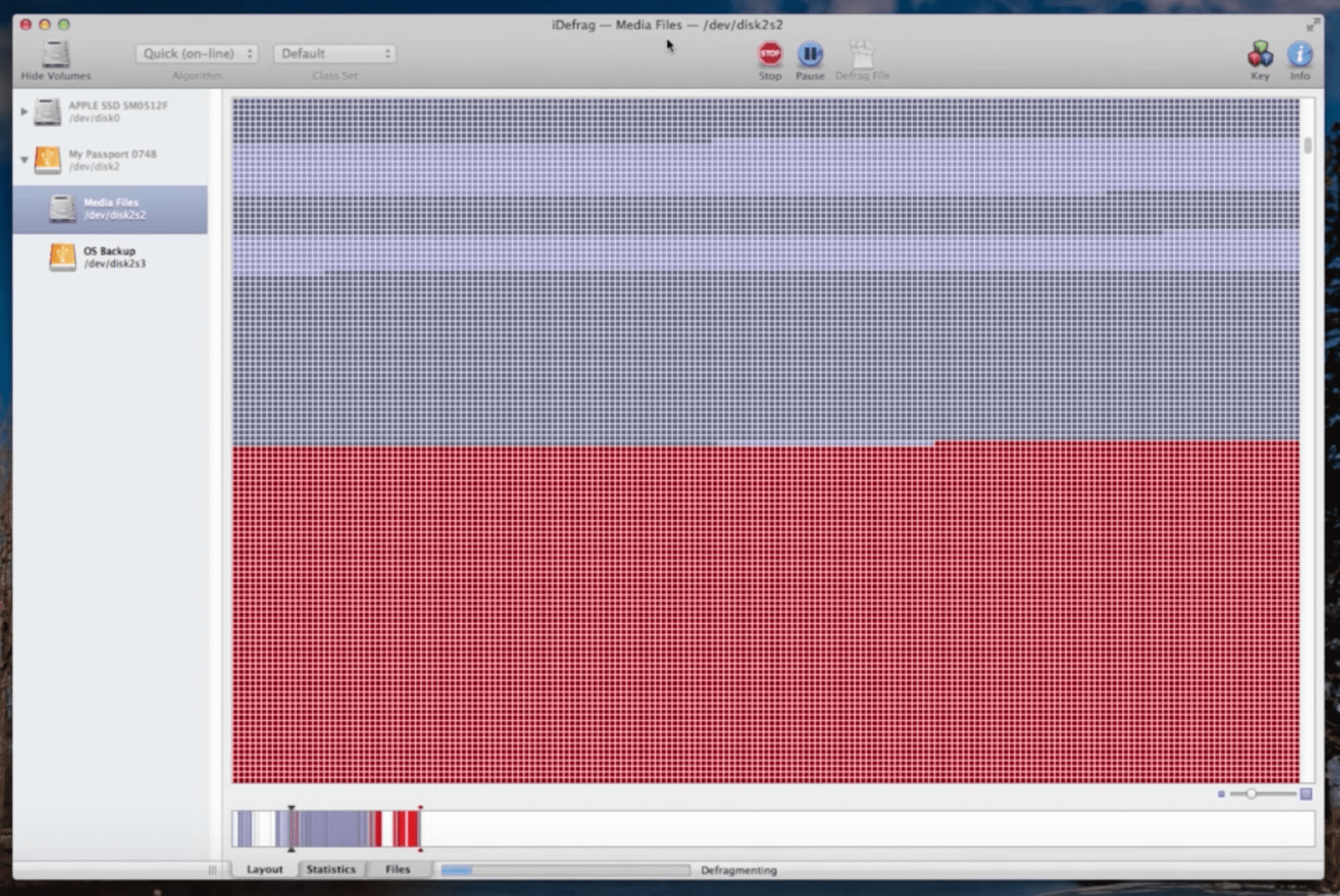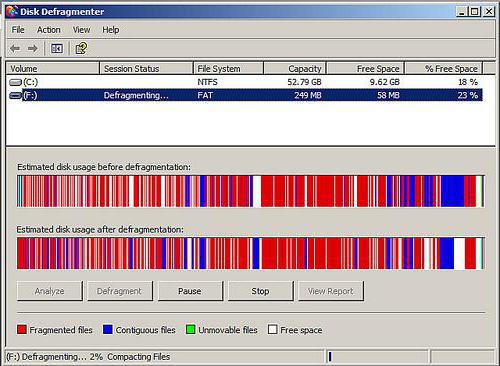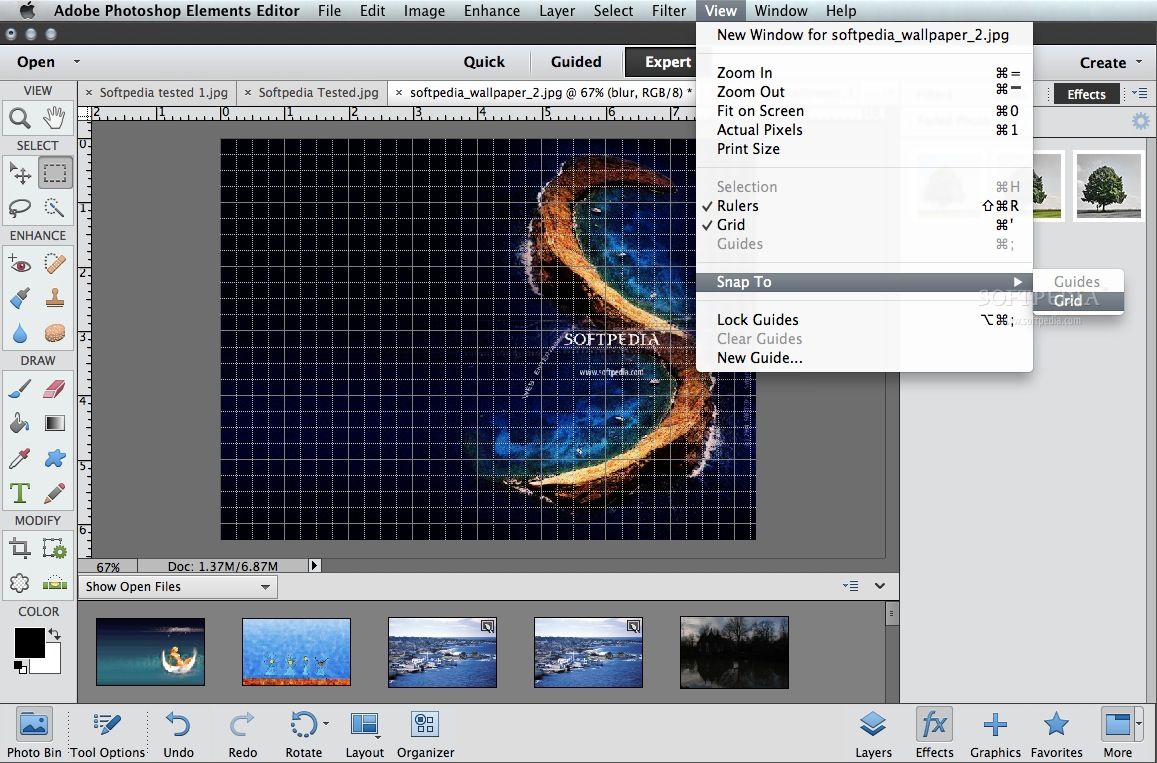Defragmenting your Mac is an important task that you need to do to keep the performance of your computer optimized. This will help boost its speed, as well as free up space on your drives. Here are some of the best tools that you can use to defragment Mac. ↓ 01 – Puran Defrag Free. Puran Defrag provides the solution! Puran Defrag is a very simple disk defragmenter which will defrag the files and optimize your system, collecting all the fragments of a file and putting them together, as well as moving some frequently used files and all directories to faster disk. The Mac OS X defrag will not harm your hard disk, but boot your Mac’s performance. How to Defrag Your Mac Hard Disk Drive. Different from the Windows system, the macOS doesn’t provide a built-in feature to defrag the Mac. So, if you really want to defrag a Mac, you can use a third-party program. Defrag mac hard drive is like a cleaner. As for Disk Defragmenter Mac, Mac runs with APFS (Apple File System) like HFS+ (Hierarchical File System). That means macOS writes small files in one batch to prevent fragmentation of disk storage. This is more difficult to defrag MacBook Pro. Part 2: Do You Need to Defrag Mac Hard Drive.
Hello and welcome to my User Tip
You might be experiencing some performance issues with your Mac, spinning beach ball, just general slowness and you knew from your PC days about defragging computers.
Well that's for Windows because the way it writes files it breaks them all up, OS X doesn't do that on small files, so it eliminates the need for MOST users to require a regular defrag. Perhaps once every few years after many updates, upgrades, program installs and reinstalls may one require it on a Mac, then rarely again.
I outlined a safe way here that always gives you a bootable backup to check, plus it really optimizes the hard drive in the process. Also it stays optimized and faster longer when defragging software tends to require it again and again to regain the performance.
If you have Filevault enabled this procedure will not work because it's one giant encrypted image, this is designed to acquire it's results by copying the parts of files into one piece again and back into a alphabetical order according to the root level directory for optimal results, especially of fast loading of Applications into memory.
First if your experiencing computer problems, backup your personal information to a storage drive first, then consult the fix it options as defragging won't necessarily solve problems in software.
So to begin with some facts:
1: Only hard drives require defragging. SSD's no need.

2: You don't need to regularly defrag a Mac's hard drive, OS X writes small files in one batch, eliminating a lot of the need to defrag a Mac regularly.
3: Hard drives are fastest at the beginning of the drive. and slowest at the very end. Data is first written on the top of the drive and works it's way down. However data doesn't magically move up to take available space, holes can develop with a lot of reads and writes. Also things can get out of order, the heads have to travel further all over the drive to boot or load programs for instance.
4: The first 50% of the drive is faster than the second 50% due to more sectors in each track which the heads have less to move and can gather more data at one time. So preferably if you can contain yourself to the first 50% of a hard drive, it will perform fast forever.
I always get twice as much boot hard drive space as I'm ever going to need, I can always partition the unused space and use it as a backup clone for on the road, or rare used items, emergency storage etc.
5: Over time (like years) a Mac can slow down as the adding and reduction of data, OS X upgrades and normal operation tends to move data making it less optimized.
6: If one wants to create a Bootcamp or second partition on the boot drive, there might be OS X data near the bottom where the second partition will go, it's sometimes not easy to move this data further up on the drive.
7: If there are bad or failing sectors on the drive, it can substantially slow down read speeds and the spinning beach ball effect occurs.
Unfortunately the only way to remedy this is by backing up users data off the drive to a external storage drive (not TimeMachine or clone) and then using Disk Utility to Erase with Zero (Security option or move slider one space to the right) the entire drive (10.6) or the Macintosh HD partition (10.7 or later) then reinstalling OS X fresh, followed by programs and return of verified user files.
8: I don't advise using defragmentation software on a 'live' system, it's dangerous and if it messes up your stuck. If anyone has defragged a PC before knows it's never really completes in actuality, but this method I have here will do so wonderfully. 🙂
So my solution is if your serious about performance, have large files like video that stretch across many sectors and want it in one piece, want to reduce bad sectors that can corrupt large and even small files, need to free up space for a partition or large file.
How to proceed
1: Reduce your boot drive user content (files, try movies first) so it's less than 50% of the drive filled (ideal) but never more than 80% filled as a full boot drive will make the computer not boot up.
Use Activity Monitor for this and reboot to see the changes if needed. (reducing user content isn't mandatory below 50% filled but preferred if you want to see the best performance)
See Storage Drive here: Most commonly used backup methods
2: Use a blank powered external drive (formatted GUID and OS X Extended Journaled in Disk Utility) and a copy of Carbon Copy Cloner to clone the OS X boot partition (aka Macintosh HD) to the external drive using the default settings and a full clone.
3: Then reboot the machine holding the option/alt key down (wired or built in keyboard), you can now boot from the clone using Startup Manager. Test the clone out for some time so your positive it's solid and reliable, catch any unknown issues (I haven't heard of any) and alleviate any fears you may have.
4: While booted from the clone, use Disk Utility to Security Option > Erase with the 'Zero' or second secure selection (on 10.7/10.8) the internal OS X boot partition (Macintosh HD), or the entire drive if there is no Recovery or Bootcamp partition (10.6 users) this will 'Zero' out all the bits, and when it reads it back for confirmation, map off any bad sectors in the process, never to be written to again. It will take some time and it's a very worthwhile step as failing sectors take longer to read from than perfect ones.
Note: You only need to do this once per drive, you might have to Erase Free Space > Zero perhaps one more time in the next year, but that should be it. Provided you don't move the computer/hard drive while it's operating (a big no no!)

5: When completed, reverse clone. the external onto the internal partition. Run Disk Utility > Repair Permissions on both and all the OnyX (Macupdate.com) maintenance and cleaning aspects and reboot. OnyX cleans out the caches and lets them rebuild.
See #12 OnyX Routine here: Step by Step to fix your Mac
You will solve your Bootcamp partition formatting problem, your bad sectors problem, your defrag problems, corrupt or bloated caches and your optimization problems all in one batch. Also have a working bootable backup in the process which is loads safer than a live defrag.
Your Application's will be written to the 'hot zone' the fastest part of the drive. They will load as fast as possible.

Your OS X system files will be written next, followed last by your User account data last which tends to grow, expand and contact, suffer with more changes so the defragmentation that occurs will occur at the end and into the slower sections of the hard drive, not where Applications and System are.
Sure over time with OS X updates, upgrades, new app installs and such you can start seeing a loss in performance again (over many years), but another clone/reverse clone will solve that problem.
Also if you want to backup and defrag Windows Bootcamp partition (CCC doesn't do that), there is WinClone for that. I don't know how effective it is as I haven't used it.
There you go enjoy the new performance! 🙂
Note: If this doesn't work to improve your performance, you likely don't have enough RAM, or the OS X version is to new/bloated for your hardware or perhaps some other issue like a failing hard drive. See this and perhaps it will assist in narrowing down the cause.

If this User Tip has benefited you, please rate it below. Thanks 🙂
If you have ever used a computer, you would have heard about the defragmenting device. It consists of a set of instructions to improve your device’s performance. Microsoft Windows has this particular option for their customers to defrag their Mac device.
But if you are a Mac user, you will not find any such utility on your device to improve the performance. Maybe this is because the Mac is designed differently in comparison to the other devices, and it can defrag the files as well. But the ability of this feature is somehow limited. So, if you want to do better than that, you would help with some external tools. Therefore, if you are interested in how to defrag Mac, a detailed step by step guide is given below.
Other Possible Methods to Defragment a Mac:Here is a Basic Concept of Defrag
It is a process in which scattered files are put into order on your hard disk. This process will remove gaps between your recorded files by putting them back to a whole file. It is the usual function of the defragging to force everything back in order & removes any blanks that have been created during the use. So, after putting everything back in order, this will make it easier for the computer to find any file you are looking for.
Besides, click to find out how to fix disk write errors on Steam and how to Remove Dropbox from Mac.
Why Do We Need Defragment on Mac?
Basically, you need to know how to defrag Mac device to boost its performance. This will be done by putting the files back into the order on your device.
If you have an OS X lower than 10.2, then it would not be compulsory to begin the defragmentation procedure. Similarly, if you are using a lower version of Mac OS, it has built-in utilities to clean up the fragments. Then, in many cases, you wouldn’t have to use this tool as a built-in feature of your device will do it. But having said that, you will need manual defragmentation for better performance. If you are installing applications, uninstalling them, and upgrading your phone, then you would need to know how to defrag Mac.
PS: here, you will learn more about how to How to Get Text Messages on Mac on Mac and how to use an external hard drive, as well as how to fix Copy and Paste Not Working on Mac.
How Often is It Required to Defrag Mac?
First, check your hard drive if it is 90% full, and then there will be problems with your Mac’s automatic defragmentation program. Mostly, this issue is faced by multimedia creators, because it is part of their job to make large files via Photoshop or Adobe.
So, in case your Mac is full of large files, then the only way is either delete these large files or defrag Mac hard drive. And the defragmentation is very effective for improving that performance of your Mac, as it will make the response time better. So, you should know how to defrag Mac.
The solution to Defrag a Mac:
As Mac has not provided with any utility or built-in command to defrag it, there is only one way to do it by using a trusted 3rd party defragmentation tool. It is a very time-consuming process to defragment. Then during this process, you cannot use Mac in any way; otherwise, the data will be destroyed. You are strongly advised to backup all your data before you defragging the Mac. You just have to follow the instructions carefully and make sure first that it is compatible with the Mac device (Mac OS 10.2 is not compatible with most of the modern defragmentation tools).
Other Possible Methods to Defragment a Mac:
To achieve more free space for your device and organize files on the hard drive are the only purpose of defragmenting the Mac. It is very clear from our above discussion; it is difficult to defrag Mac. We should give it a try if there is a simple way to do it.
1. Utilization of an Easy & Powerful Software:
After deep research for such software on the market that tells you how to defrag Mac, the most popular and highly suggested is iMyFone Umate Mac Cleaner. This is specially designed for Mac management. If you wish to get more space for your Mac, it offers six main features
- i. Clean up your junk files
- ii. Delete your large files
- iii. Delete your duplicate files
- iv. Erase your private data
- v. Speed up your Mac
- vi. Manage apps & extensions
It can be used in the latest Mac OS 10.15 Catalina. Let’s find out why is it the best alternate option and what features do affect the performance directly.
Besides, if you are bothered with the macOS Big Sur slow or The macOS Installation Couldn’t be Completed issues, this tool can help you too.
i. Clean up your junk feature:
- It offers Deep Clean and Quick Clean modes to find and remove junk files on the Mac.
- That Quick Clean mode only intensifies the burden of the computer operation rather than improving its performance.
- It deletes the files like app junk, system junk, iTunes junk, files on the trash bin, downloaded files, outdated iOS backups, or unused disk images.
ii. Delete your large files:
- This will find all those files bigger than 50MB by scanning Mac and its hard drive and then delete them.
- All possible files in this would be images, audios, videos, archives, documents, or other.
- This can also delete the files that are hidden on Mac.
iii. Delete your duplicate files:
- It will give you the option to choose a file directory on the Mac to get and remove duplicates easily.
- All possible files would be videos, images, audios, archives, document, or other.
- It will also provide support to preview your files on the Finder.
- The good thing about it is that it will keep original files for you to avoid that you delete them by mistake.

iv. Speed up the Mac:
This option will really help your Mac to run faster. It will disable all login applications, remove apps that take too much space, and also deletes those launch agents. Some of its properties are here
- It will remove all startup items on your Mac automatically and deletes them with 1-click.
- Those programs that are taking most of the RAM & CPU space can be deactivated at one time. But there will also be the option to do it optionally.
- It deletes the launch agents.
Above mentioned are the abilities of iMyFone Umate Cleaner. It is quite handy for defragging your Mac & making it run fast. It is effortless to use. You should download it, scan it, and delete it.
2. Fixing up Disk Permissions:
Here is another method that will tell you how to defrag Mac, and it is to repair your disk permissions. It is actually troubleshooting way on Mac.
The method is very easy. Let’s have a look.
1: Turn on your Mac & go to ‘Disk Utilities.’
2: First, choose ‘Startup Disk’ and then ‘First Aid.’
3: Choose ‘Verify Disk Permissions‘ to check it.
4: Finally, choose ‘Repair Disk Permissions‘ to correct any irregular permission.
3. Update Mac OS Software:
If all methods are failed, and you don’t know how to defrag Mac, then your final option is to update your Mac OS software. The method is pretty simple.
1: Go to ‘Apple Menu‘ and choose ‘System Preferences.’
2: Then, choose ‘Software Update.’
If there are any updates, you will see them and then just download these updates & install them.
A Brief Conclusion on How to Defrag Mac
Now, if you are wondering how to defrag Mac? Yes, it is possible and straightforward. Mac is designed to defrag your hard drive, but sometimes it does not. In such cases, all you are required to do is to do it manually, also, we have also explained some other methods to fix your slow running Mac. If you want to do it fast and effectively, then the best option is using Umate Mac Cleaner.
A Few Realities About Defragging Mac
If your Mac is having some problems with speed and you are thinking about how to defrag Mac, then you have to consider some facts about it. The following are a few facts you should know.
For people who have a problem with your Mac and would like to try defragging Mac, please learn more about the facts below:
- Always remember one thing that is only the hard drives need defragging. If there is any Solid State Drive in your Mac, no need for it.
- You don’t have to defrag Mac daily. The OS X adds small files in one time, so don’t waste your efforts on defragmentation.
- And the Hard drives work very fast when they are at the start, but then this slows down as data written to the bottom. So, don’t use all that available space because it will create holes in the hard drive.
- After years of usage of Mac, your system will start slowing down due to the addition and deletion of the data. And that OS X upgrades also disorganize the data. Therefore, you will need to defrag your Mac.
- Mac OS collects a bunch of the small files and organizes them in the large space.
- Mac’s HFS + File system guarantees the space that is recently freed will not be utilized on that So, the system tries to find a larger free area that is present on your drive.
- Whenever you opening a file, your Mac system verifies first whether those files are fragmented or not. And if they are fragmented, your Mac OS will defrag Mac files automatically.
Different Possible Methods to Defrag Mac
There are other possible methods instead of using the tools mentioned earlier if you are facing performance problems with your Mac and don’t know how to defrag Mac. The following are some ways that will make sure your Mac performance.
Method 1: Please Install Latest Updated of the MacOS:
If you install the latest updates of your macOS, this will offer stability, better security, and speed to your Mac. This is not only going to update the installed tools, but you wouldn’t need any defragging software to improve its performance. So, you don’t have to worry about how to defrag Mac.
1. Go to the ‘Open System Preferences‘ and click on the update option to check for any updates.
2. And if you found the update is visible, then choose the option of Update Now to install it.
After updating the software, be sure that the apps are also updated.
Method 2: Remove Large and Useless Files:
If you remove the large and unnecessary files, the performance of the Mac system will be improved. This is another method to avoid defragging the Mac drive. The following are the steps to delete those extra files.
1. Go to the drive and open the ‘Search Window.’
2. hoose the “+” icon and select the file size you would like to search.
3. After getting the results from the search, you can choose the files that you want to delete. You can delete the required files by moving them to Trash Icon after right-clicking the file. And don’t forget to empty your trash too.
Method 3: Now, Boot Mac in Safe Mode:
The final method to get rid of performance issues and steer clear of defragmentation on Mac is to boot your system in Safe Mode. In this way, there is no need to install any application, and also, it will also remove your cache files.
How To Defrag My Mac For Free
1. The first step is to restart the Mac, then press & hold the shift key immediately until your Apple Log becomes visible.
Free Mac Defrag Utility
2. Once you see that login window, release the shift key. You will have to log in twice, and then unlock the startup disk, after that, please log in to the folder.
Safe mode will then remove the directory or cache issue when to start up again. To go back to normal mode, you will be requested to restart your Mac without pressing any key.
How To Defragment A Mac
“Now, whenever someone asks you how to defrag Mac, you can answer that with all the necessary details and methods. After reading the above article, you have all the information to improve the performance issue on your Mac. If by any chance, the data is deleted, then Recoverit Data Recovery will be able to help you get back those deleted files. You can share this step-by-step guide with your family and friends so that they can improve their Mac performance easily.”